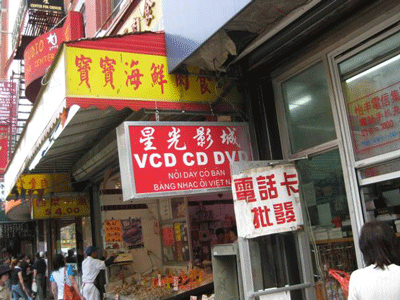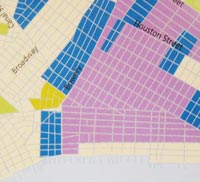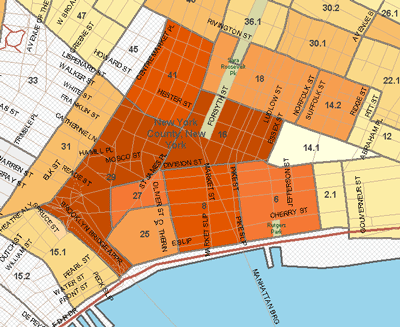Chinatown
Many do not realize that New York's thriving Chinatown is a suprisingly recent phenomenon. Even during America's open immigration years in the late 19th and early 20th centuries, Chinese were not welcome. The Chinese Exclusion Act of 1882 formalized ugly prejudice.
New York's Chinatown stayed very small, surrounded in the early 20th century by Italian and Jewish immigrants.
Even as late as 1950, Chinatown was small.
Chinese Exclusion stayed in effect de facto until 1965, when the racist provisions of US immigration law were removed, liberalizing immigration by all non-European groups.
Only 5 years later in 1970, Chinatown had already expanded greatly. Italians and Jews had already left for middle-class and upper-class neighborhoods elsewhere
Today Chinatown is one of Manhattan's most thriving neighborhoods. Other East Asian immigrants also congregate there.
The ladder out of poverty continues for today's immigrants, following the Italians and Eastern Europeans, who in turn had followed the Germans and Irish.
The next time I have dim sum at Jing Fong on Elizabeth Street, I'll raise a glass of green tea to immigration freedom.
 From Aid to Equality
From Aid to Equality





